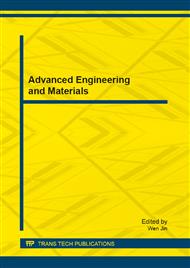[1]
Montgomery JS, Wells MGH. Titanium armor applications in combat vehicles. Journal of the Minerals 2001; 53(4): 29-32.
Google Scholar
[2]
F. H. Sam Froes, Mehmet N. Gungor, M. Ashraf Imam. Cost-affordable titanium: The component fabrication perspective. Journal of the Minerals 2007; 59(6): 28-31.
DOI: 10.1007/s11837-007-0074-8
Google Scholar
[3]
Meyer LW, Krueger L, Gooch M, Burkins M. Analysis of shear band effects in titanium relative to high strain-rate laboratory/ballistic impact tests. Journal of Physics IV 1997; 07(C3): 415-422.
DOI: 10.1051/jp4:1997372
Google Scholar
[4]
Me-bar Y, Rosenberg Z. On the correlation between the ballistic behavior and dynamic properties of titanium-alloy plates. International Journal of Impact Engineering 1997; 19(4): 311-318.
DOI: 10.1016/s0734-743x(96)00046-2
Google Scholar
[5]
Liao SC, Duffy J. Adiabatic shear bands in a Ti-6Al-4V titanium alloy. Journal of the Mechanics and Physics of Solids 1998; 46(11): 2201-2231.
DOI: 10.1016/s0022-5096(98)00044-1
Google Scholar
[6]
Lins JFC, Sandim HRZ, Kestenbach HJ. Dynamic mechanical properties in relation to adiabatic shear band formation in titanium alloy-Ti17 Li. Materials Science and Engineering 2003; A358: 128-133.
DOI: 10.1016/s0921-5093(03)00292-2
Google Scholar
[7]
Timothy SP, Hutchings IM. Adiabatic shear band fracture surfaces in a titanium alloy. Journal of Materials Science Letters 1986; 5: 453-454.
DOI: 10.1007/bf01672359
Google Scholar
[8]
Meyer Jr HW, Kleponis DS. Modeling the high strain rate behavior of titanium undergoing ballistic impact and penetration. International Journal of Impact Engineering 2001; 26(1-10): 509-521.
DOI: 10.1016/s0734-743x(01)00107-5
Google Scholar
[9]
Liu X, Tan C, Zhang J, Wang F, Cai H. Correlation of adiabatic shearing behavior with fracture in Ti-6Al-4V alloys with different microstructures. International Journal of Impact Engineering 2009; 36(9): 1143-1149.
DOI: 10.1016/j.ijimpeng.2008.12.007
Google Scholar
[10]
Demir T, Übeyli M, Yıldırım RO. Investigation on the ballistic impact behavior of various alloys against 7. 62mm armor piercing projectile. Materials and Design 2008; 29(10): 2009-(2016).
DOI: 10.1016/j.matdes.2008.04.010
Google Scholar
[11]
Zhao H, Gray G. On the use of SHPB techniques to determine the dynamic behavior of materials in the range of small strains. International Journal of Solids and Structures 1996; 33(23): 3363-3375.
DOI: 10.1016/0020-7683(95)00186-7
Google Scholar
[12]
Lee D, Lee S, Lee C, Hur S. Effects of microstructural factors on quasi-static and dynamic deformation behaviors of Ti-6Al-4V alloys with widmanstätten structures. Metallurgical and Materials Transactions A 2003; 34: 2541-2548.
DOI: 10.1007/s11661-003-0013-4
Google Scholar
[13]
Song B, Chen W. Energy for specimen deformation in a split Hopkinson pressure bar experiment. Experimental Mechanics 2006; 46(3): 407-410.
DOI: 10.1007/s11340-006-6420-x
Google Scholar


